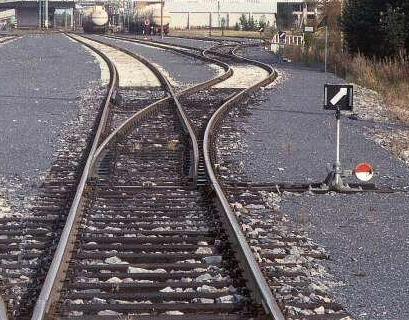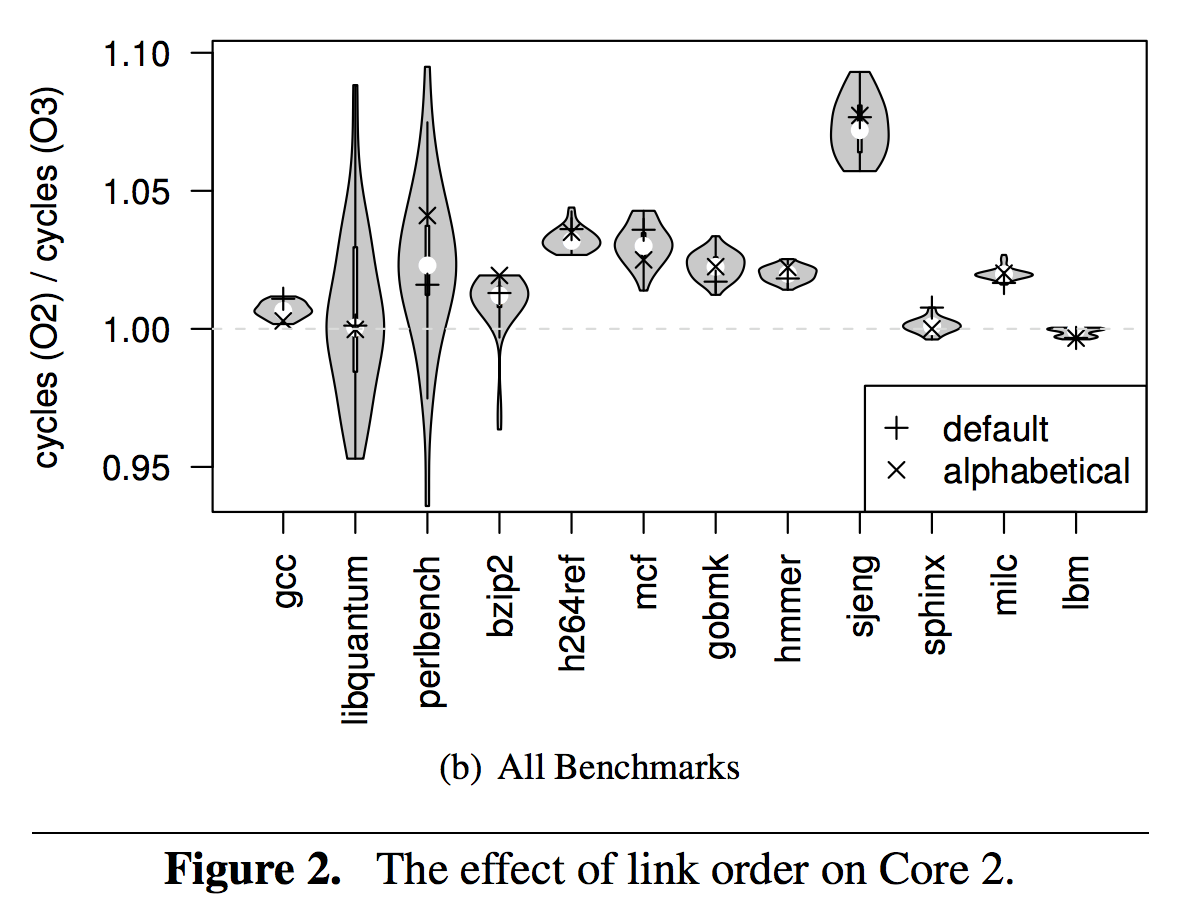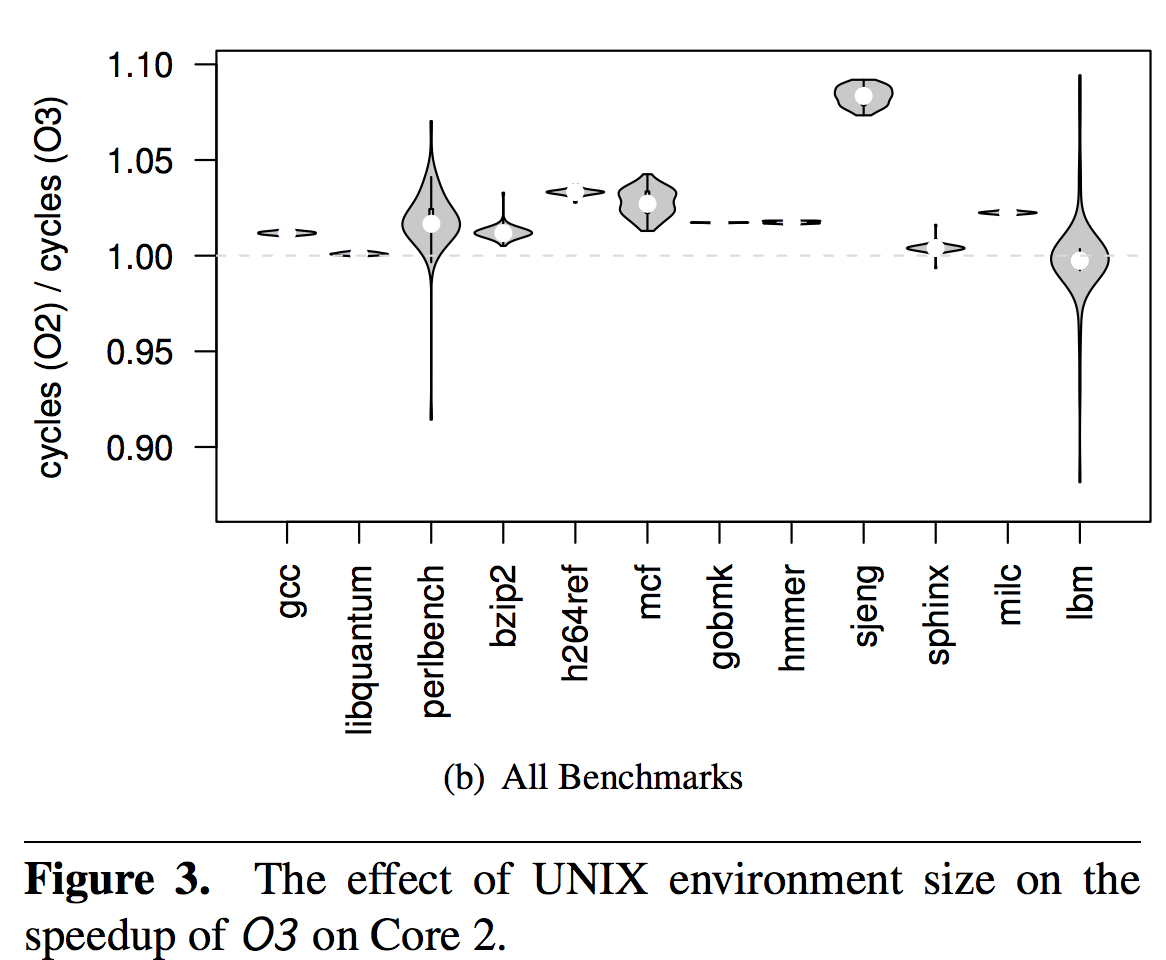1-hour dive into things worth knowing about contemporary CPUs & memory
Dmitry Petrashko

Efficiency vs Performance
Efficiency = doing less work
- either by using a better algorithm
- or by not doing unnececary work
Performance = doing it faster
Using hardware more efficiently
Know your hadrware

Adventures begin!
Adventures make you question your assumptions.
Can inefficient algorithm be more performant?
InsertionSort vs QuickSort for small arrays
"Small" is up to 5000 elements
In many programs average length of array is <4 elements.
Why?
- QuickSort is on average O(N log N)
- InsertionSort is on average O(N * N)
- both O hide constant multiplier
- constant for Insertion sort is much smaller
- Efficient
- Performant
- Fast
None of them imply the other
Can doing more work be faster than doing less?
Can 64-byte write be faster than 1-byte write
Yes, when it's aligned!
Why?
- memory is always read and written in 64-byte lines
- if you need to write 1 byte you
- read full 64-byte line
- replace 1 byte
- write full 64-byte line
Less instructions -> faster code?
See previous example :-)
Some instructions are "simple", some are "hard"
Sometimes cpu is simply wierd
Weird example:
Taken from Eli Bendersky: http://eli.thegreenplace.net/2013/12/03/intel-i7-loop-performance-anomaly/
const unsigned N = 400 * 1000 * 1000;
volatile unsigned long long counter = 0;
void foo() {}
void loop_with_extra_call() {
unsigned j;
for (j = 0; j < N; ++j) {
// __asm__("call foo");
counter += j;
}
}
on Haswell: 0.686s without call, 0.602 with call
Likely cause: loop aligment
Can a single threaded program do work in parallel?
GC is a different thread: does not count.
Instruction level paralelism
def foo(a: Array[Int], idx: Int) = {
val s = a[idx]
return idx * idx + idx / 2 + idx * 6 + s;
}
CPU: superscalar
Issue Width in Haswell: 8.
Can failed CPU speculations be good?
"Good" failed speculations
def foo(a: Array[Int], idx: Int) = {
val s = a[idx]
if (s < 0) idx + idx
else idx - idx
}
Both branches will be executed in parallel, only one of them will be retired
Failed speculations can be good!
Reasoning about performance
"Date" makes a difference
Date matters
Performance recipes do not age well.
What used to be good idea, may become a subpar approach soon.
Understanding hardware
Tenchiques used by hardware are tricky and change fast, but general ideas are simple and stay the same:
- temporal bet;
- spacial bet;
- pattern bet.
Temporal bet
If you've used a resource, you'll use it again soon.
Temporal bet: illustration
- first read of an integer from memory takes ~100ns;
- second read of same integer that follows first one will take <1ns.
Spacial bet
If you've read some data, you'll soon read more data close to it.
Spacial bet: illustration
val a: Array[Array[Int]] = ...
val i = 0
while (i < n) {
val j = 0
while (j < n) {
if(fast) {
a[i][j] += a[i][j]
} else { // slow
a[j][i] += a[j][i]
}
j += 1
}
i += 1
}Pattern bet
Behaviour of your program has simple repeating patterns.
Pattern bet: illustration
val a: Array[Int] = Array.fill(1000000)(scala.util.Random.nextInt)
// a = a.sorted // speeds up the loop below by 6x
val i = 0
while (i < n) {
if (a[i] > 0)
a[i] += 1
i += 1
}

Made a change and your app became faster?
 |
 |
Be aware of layout changes:
- layout of code can impact performance by ~5%.
- even size of starting environment can! Includes folder name!
See Mytkowicz, Todd, et al. "Producing wrong data without doing anything obviously wrong!."
Advice
- getting performance is hard, needs a lot of exploration;
- exploration needs to be repeated - old recipes don't age well;
- loosing performance is easy, seemingly small changes can kill it;
- tracking performance from start is crucial;
- measure on an isolated machine with the same environment for all runs.
Thank you.
Q & A
Further read: